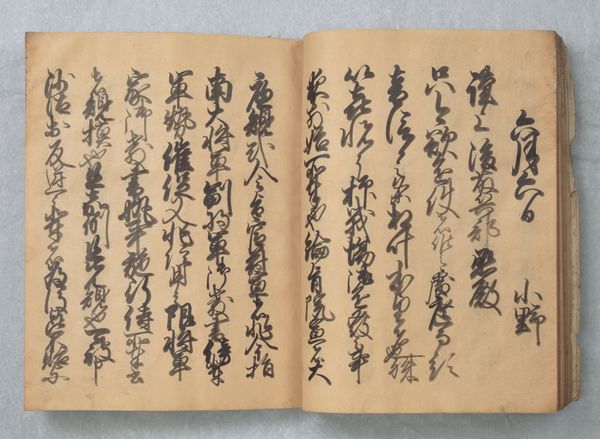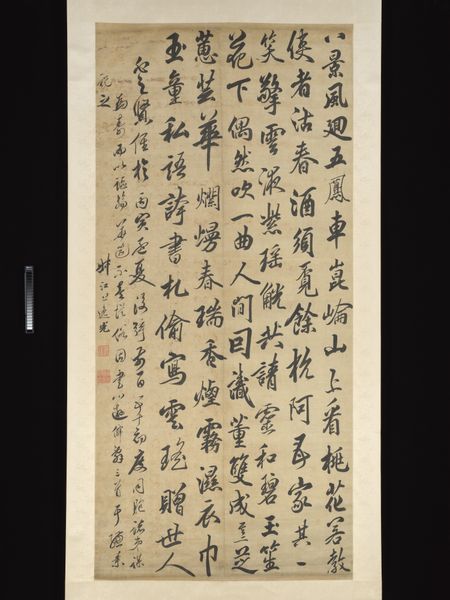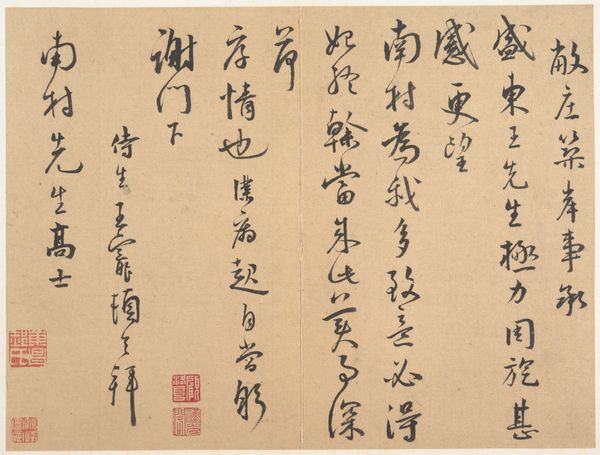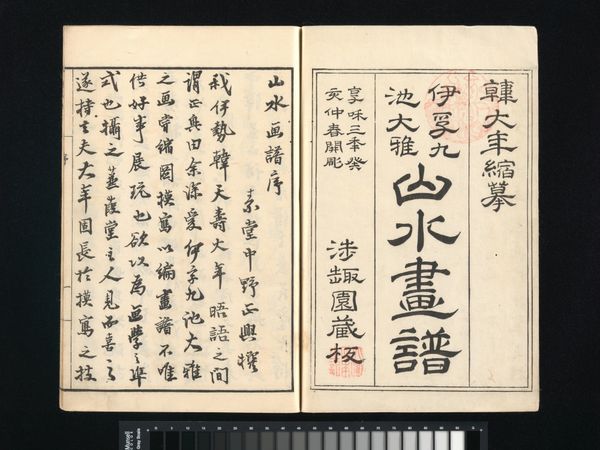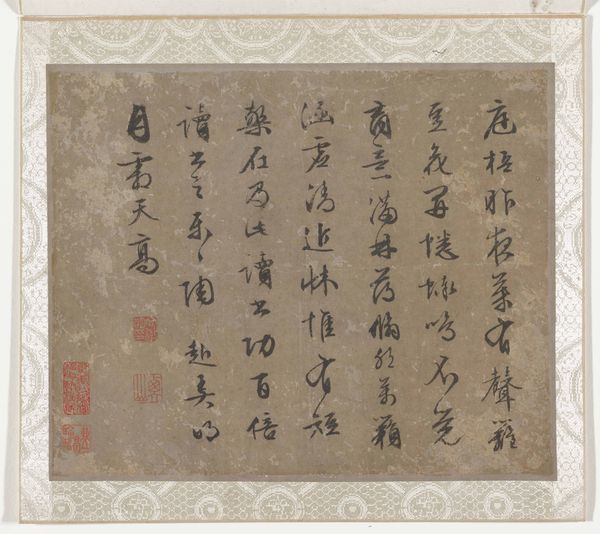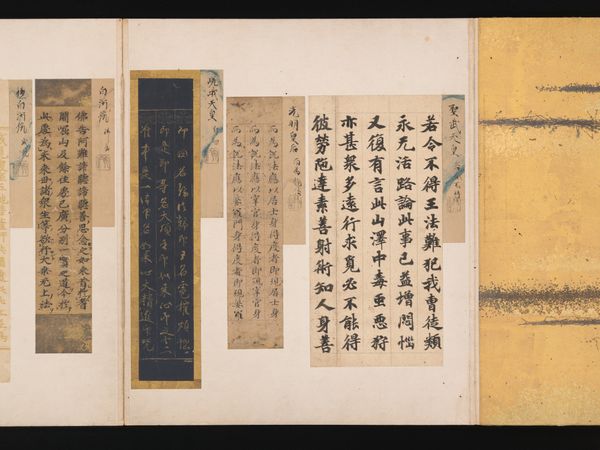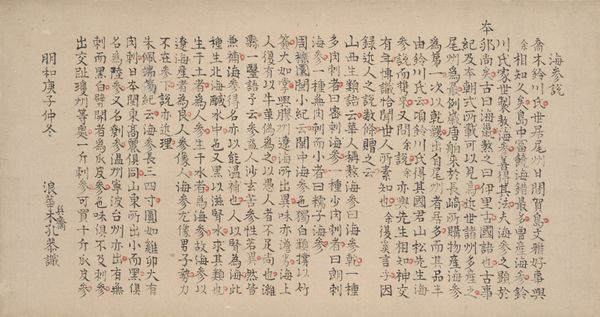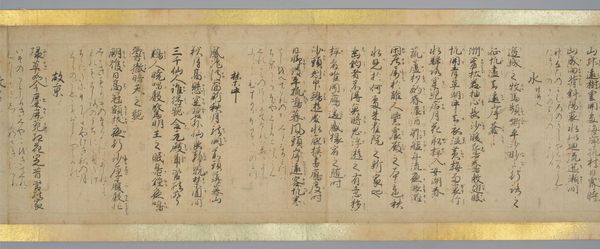
Poems from the Pavilion of Fundamental Truth (Zhenyi Ting) 1612 - 1672
0:00
0:00
drawing, ink
#
drawing
#
asian-art
#
ink
#
china
#
calligraphy
Dimensions: Image: 10 3/8 × 6 1/2 in. (26.4 × 16.5 cm) album: 13 7/8 × 8 1/2 × 1 1/2 in. (35.2 × 21.6 × 3.8 cm)
Copyright: Public Domain
Curator: Here we have "Poems from the Pavilion of Fundamental Truth (Zhenyi Ting)," dating from sometime between 1612 and 1672. It's attributed to Zhou Lianggong, and it's crafted using ink on drawing. You can currently find it at the Metropolitan Museum of Art. What's your first reaction? Editor: Immediately, I feel a sense of serene introspection. It's incredibly elegant, yet somehow feels fragile—ephemeral, even. The dense, vertical lines of calligraphy give it this weight, but also a rhythmic flow. It reminds me of falling water. Curator: That’s a beautiful interpretation. Considering Zhou Lianggong’s biography—a scholar, a poet, and also an official in a tumultuous period—do you think that fragility could reflect something about his experience of the late Ming Dynasty’s decline and fall? Editor: Absolutely. The very act of committing such intimate thoughts to paper during those times could be seen as an act of resistance, a preservation of cultural identity in the face of upheaval. And look at the subject matter. It references traveling, poetry, the natural world – classic symbols that embody resilience, don't they? A longing for peace during chaos perhaps. Curator: The title is so loaded! "Pavilion of Fundamental Truth". A search for clarity, a space for reflection within the chaos, you think? Editor: Precisely. It invites questions about what exactly those “fundamental truths” are during a time of immense societal shift. Where is the grounding, how does he perceive social unrest around his position? We need that "truth" today more than ever. What’s struck you most about it? Curator: The deliberate placement, the intentionality behind each stroke. It’s not merely writing; it's almost sculptural. But for me, it's deeply personal; I sense Zhou Lianggong sorting through feelings in the most chaotic and reflective manner. Editor: I agree; it’s so moving and offers such insight into a moment in history we are still coming to terms with in relation to Asian political identities. This piece reveals the enduring power of artistic expression amidst struggle. Curator: Thanks to art like this, that expression speaks to our lives, so far removed, in surprisingly profound ways.
Comments
No comments
Be the first to comment and join the conversation on the ultimate creative platform.

